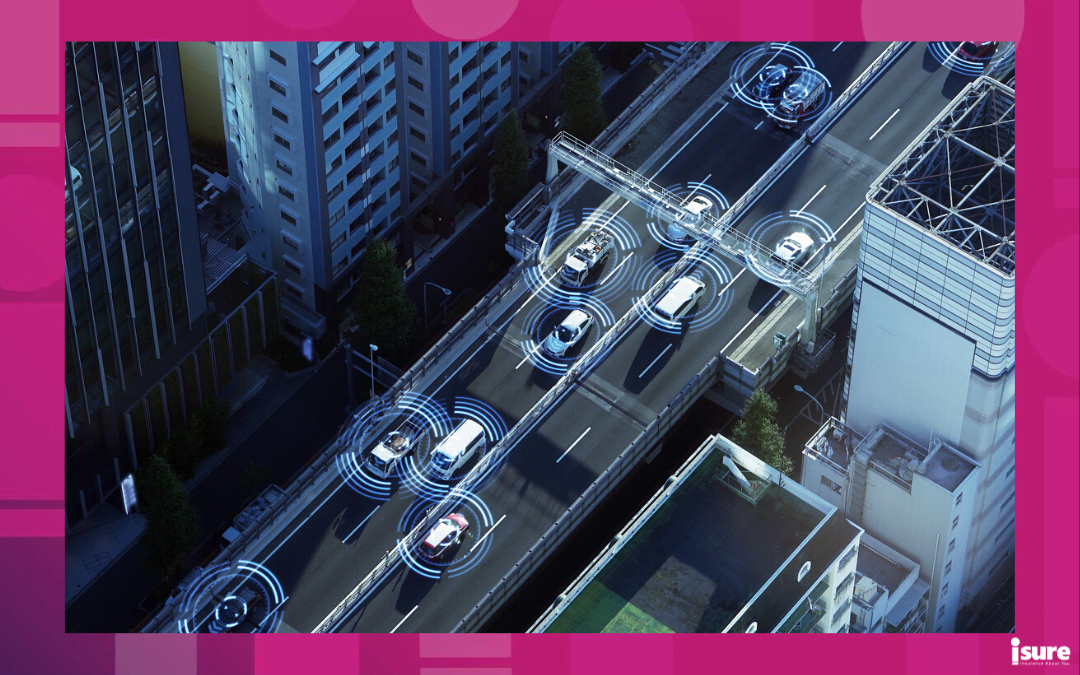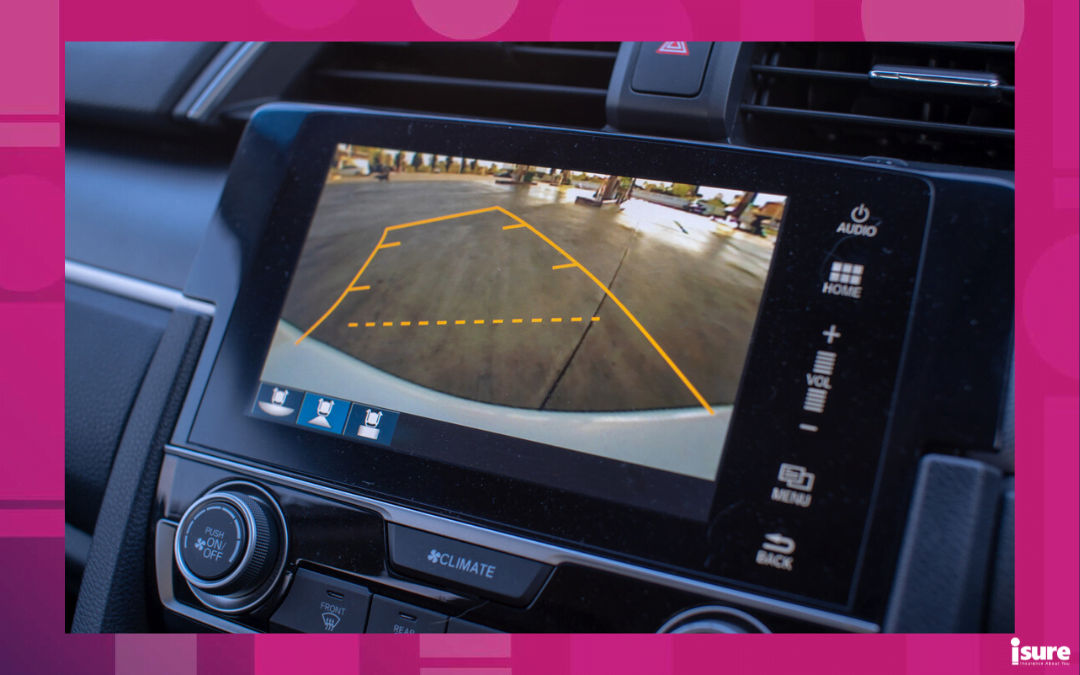When it comes to our vehicles, electronic technology features are of major importance. These items are now an integral part of how you interact with your vehicle, as well as how your vehicle interacts with the cars around it on the road. We’ve researched the available tech and have put together our list of the best types of automotive technology to look for in your next vehicle.
Automotive technology: Driving the future
Some of the best types of automotive technology have already arrived and are commonly found in most new vehicles. The type of trim you choose will determine the level of diversity in your tech options. Tech features are generally classified into three categories:
- Safety and security measures
- Communication and connectivity features
- Parking and visibility
Safety and security measures
Advanced Driver Assistance Systems (ADAS)
This is a category of systems that can ensure that you know when a vehicle is in your blind spot, can keep you a safe distance from the car in front of you, and can keep your vehicle from drifting into another lane. Anti-lock brakes were one of the first of these features that are now standard equipment on every new car. Often times, ADAS come in bundled safety suites. Even if a model you are shopping for doesn’t have ADAS as a bundle, many automakers sell them as standalone options or include them as part of a specific trim level.
What are some key Advanced Drivers Assistance Systems?
- Adaptive Cruise Control (ACC): Similar to regular Cruise Control, ACC also keeps your vehicle at a set speed. Additionally, it slows down or accelerates to keep a safe distance from the car in front of you.
- Blind-spot alert: Sensors on your vehicle detect if there is a vehicle in your blind spot. As a result, an alert is triggered on your side mirrors.
- Cross-traffic alerts: This lets you know if a vehicle is approaching while backing out of a parking space. This system often uses radar units on the vehicle to detect cross traffic. Some newer systems also prevent you from turning left across traffic if it senses a vehicle is in your path.
- Automatic emergency braking: When your car senses that a collision is imminent, AEB activates your car’s brakes, potentially avoiding or minimizing an accident. If it senses you need to stop sooner, AEB can also brake harder than the pressure you’re applying.
- Pedestrian detection monitors: These monitor and camera kits detect movement around you by pedestrians and cyclists. These can be a massive help when driving in busy areas such as cities. On top of this, it can even lower your car insurance premiums!
- Forward Collision Warning (FCW): Senses if you are at risk of a potential collision with the vehicle ahead of you. Auto companies offer different levels of front crash prevention, ranging from audible and visual warnings to autonomous braking.
- Lane-Keep Assist: Advanced version of LDW, this feature uses steering to keep your car in the lane. If your vehicle drifts into oncoming traffic, some systems will also use steering to get back onto the correct side of the road. Some carmakers marry the two and call the driver aid Lane-Departure Warning with Steering Assist.
- Head-Up Display (HUD): This feature is designed to reduce the time a driver’s eyes leave the road to check driving information. A projection displays information on the windshield just below the driver’s line of sight.
- Driver attention monitor: This helps combat drowsy or distracted driving, and monitors the car movements and steering to see if the driver is driving attentively.
Communication and Connectivity Features
There is a plethora of key communication and connectivity features that can enhance your driving experience. As technology continues to improve, so do our vehicles. Not only do many of these features make your driving experience more simple and enjoyable, but they also bring in a level of safety with them as well.
Connected mobile applications
Some of the most researched types of automotive technology have to do with connectivity. Almost every car company has an app you can download for your car for this purpose. Some popular features include:
- Remotely lock and unlock the doors
- Check the status of fuel level and tire pressure
- Remotely start the vehicle
- Display key maintenance features, such as how much gas you have left, or range in an EV.
There is a ton of extra security measures built in that can tie your phone to your car. For example, some situations allow you to hold the smartphone near the door to lock and unlock your car, or even drive the car with just the phone. Make sure to ask if there is a monthly or yearly subscription fee for the service, as it can vary from carmaker to carmaker.
Teen driver technology
This is a bundle of tech features aimed at parents with younger drivers in the house. The system can notify you if the car is driven over a certain speed, disable the audio if seat belts aren’t in use, and set a volume limit on the sound system. A report card will tell you if safety systems, like ABS or forward collision alert, are triggered while your teen is behind the wheel. Some car companies also allow you to program the FOB to limit the vehicle’s top speed, set up a ‘do not disturb’ for smartphones, curfew alerts, and car finder, as well as what time of day (or night) the car is on the road, and where it’s driven.
Wireless smartphone connectivity and charging
With applications such as Waze or Google Maps, smartphones are a necessity for many drivers. Wireless smartphone connectivity and/or charging is a great way to declutter your driver’s seat. Because wireless charging uses a charging pad, that spot in the vehicle serves as a handy storage area for your phone. It adds a layer of protection so that in an emergency, in or out of the car, your phone can be fully charged. Remember to stay off your phone when on the road!
Emergency services and stolen vehicle tracking software
To say that Ontario has a car theft problem is an understatement. Theft has risen 40% in Toronto from January to August 2022 in comparison to the same period in 2021. If your car, truck, or SUV is equipped with one of these systems, it makes it a lot easier for law enforcement to find your vehicle faster, potentially reducing damage to your car. Stolen vehicle tracking software is part of the assistance and security systems of many car makers today. These systems can help get rescue services to you after a crash has happened by pinpointing your vehicle’s exact location.
Telematics
Telematics is the marriage of communications and computer data. In vehicles, it involves GPS tracking, cell phone service, and a vehicle’s computer system. It allows a direct connection between your smartphone, car, and telematics provider. Telematics can automatically summon first responders in the event of a crash, remotely unlock your car, locate your vehicle, provide a weather report, or provide turn-by-turn directions.
Parking and Visibility
Safe Exit Assistance
Riding a bike is a constant challenge in the city. This feature helps riders and drivers alike with an exit warning. The alert uses rear-looking sensors to detect approaching bicycles and traffic. This ensures that a passenger or driver doesn’t open a car door just as a cyclist comes by. Exit warning systems work for several minutes after the engine is shut off.
360-Degree Camera
This is a very popular feature that’s becoming easy to find in new cars of all price ranges. By combining cameras on every side of the car with some clever automotive technology, your car’s display can show a virtual top-down view of your surroundings. A 360-degree camera can make sure you don’t hit anything while you’re parking. Not only can this keep your car scratch- and dent-free, but it can reduce insurance claims from low-speed crashes.
Blind-spot view monitor
A blind-spot monitor uses a small camera on either side of your car to display what traffic may be in the lane next to you. This can help prevent you from hitting another car, or person on a bicycle or motorcycle.
Video rearview mirror
A video rearview mirror uses a rear-mounted camera that displays the view behind your vehicle. This type of rearview mirror is in the same spot as the traditional version, but you can toggle between the regular and video view. This type of mirror is also helpful when towing your trailer up north.
Interior motion and rear occupant alerts
Several manufacturers install rear-seat reminders to minimize the chance of a child or pet being left behind in the back. It uses seat sensors, motion detectors and rear-door monitoring to detect movement. The car is then programmed to sound an alarm and can even send a notification to the car owner’s phone. Expect all passenger cars and SUVs to have these types of safety automotive technology by 2025.
Parking sensors and assist systems
Proximity or parking sensors aid drivers when maneuvering into a parking spot. The sensors can detect other parked cars, tall curbs and other obstructions. Parking assist systems help take the guesswork and stress out of parking your car. Offering different levels of automation; some systems will steer the vehicle into the parking space for you, while others will find the spot and then fully park the car. Some will even allow you to use the key fob to pull the vehicle into the parking spot on its own or even summon it to your location!
In conclusion
Automobile safety divisions are becoming increasingly more innovative, and certain trends are gaining momentum. Car companies are offering cheaper, effective, and easy-to-implement safety options for their vehicles. We hope our list of the main types of automotive technology helps you when choosing your next new or used vehicle. Contact one of our isure representatives if you have any questions about how your purchase may affect your current auto insurance premiums.




